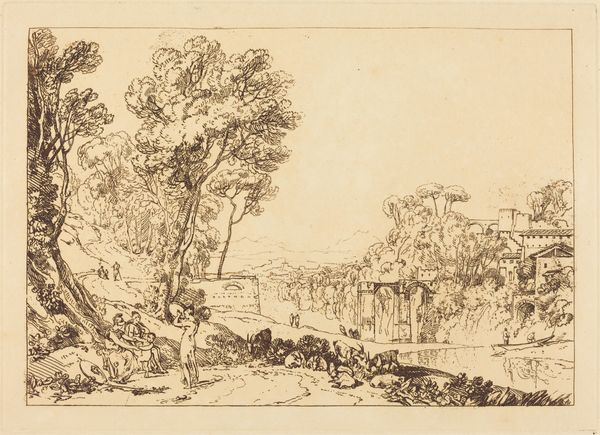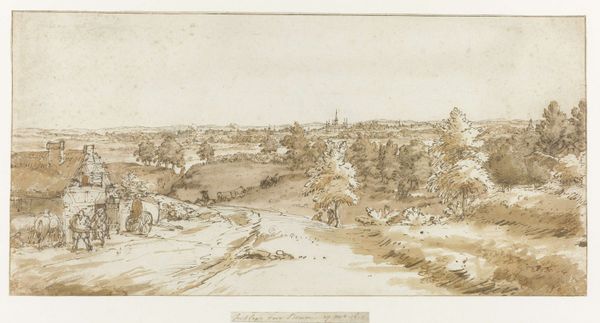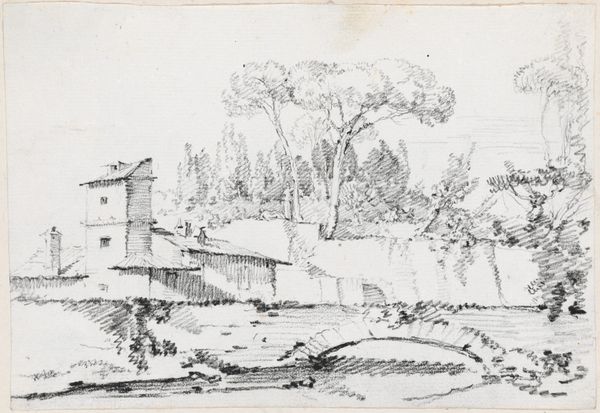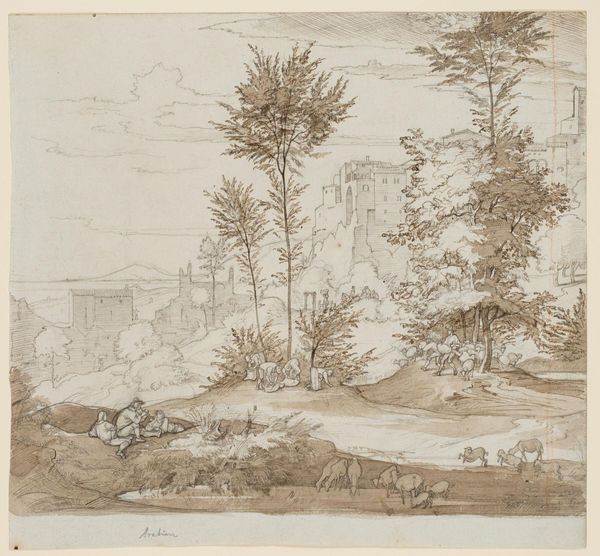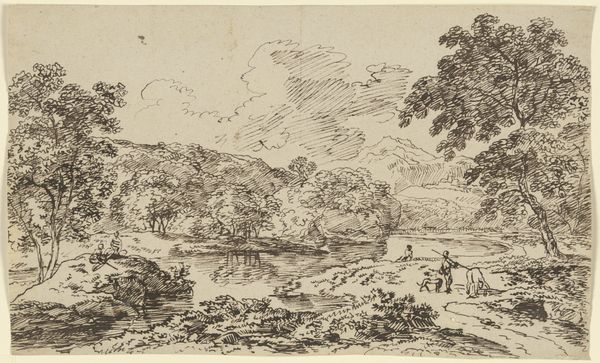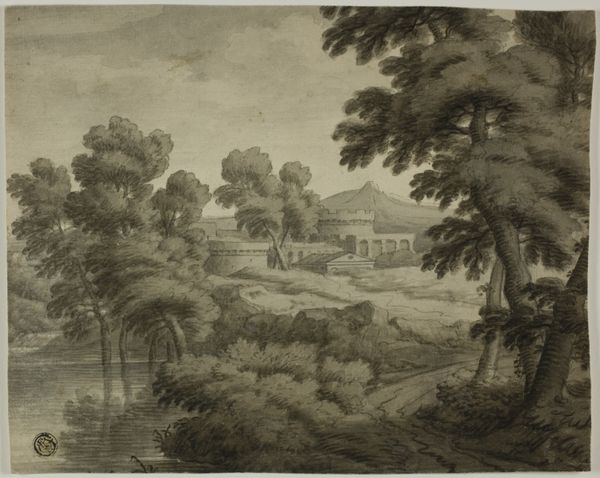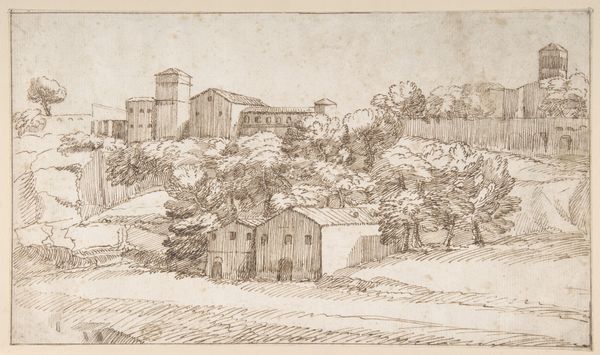
drawing, ink
#
pen and ink
#
drawing
#
ink drawing
#
landscape
#
etching
#
ink
#
line
Dimensions: overall: 30.9 x 40.5 cm (12 3/16 x 15 15/16 in.)
Copyright: National Gallery of Art: CC0 1.0
Editor: Here we have "Upnor Castle," an ink drawing, potentially an etching, it seems. It’s all about lines and creating texture and depth using only those means, almost like a topographical survey. What formal qualities stand out to you in this landscape drawing? Curator: Indeed. The artist displays a keen interest in linearity. Notice the dominance of line to delineate form, to construct shadow. The trees, for instance, are not depicted in mass but as a network of lines, their density varying to create tonal differences. Note, also, the strategic placement of the buildings and fortifications; the composition emphasizes the geometrical relationship between man-made structures and nature, mediated via an economy of line and an interesting flatness of pictorial space. Editor: It’s very two-dimensional, you’re right. Almost like a diagram, despite clearly depicting a scene. Is this flatness a feature of drawings in this period? Curator: It invites us to consider not only the 'what' but the 'how'. The simplification of form directs attention to the graphic qualities of the medium. Are we looking at a depiction of Upnor Castle or a study in the art of drawing? How does the artist use hatching and cross-hatching to create an illusion of depth, while simultaneously reinforcing the picture plane? These are key considerations. Editor: That really gives me a new way of looking at what a drawing can do – how it's not *just* a window to a real place. Thank you. Curator: Precisely. The interplay between representation and abstraction invites contemplation on the very act of seeing.
Comments
No comments
Be the first to comment and join the conversation on the ultimate creative platform.
